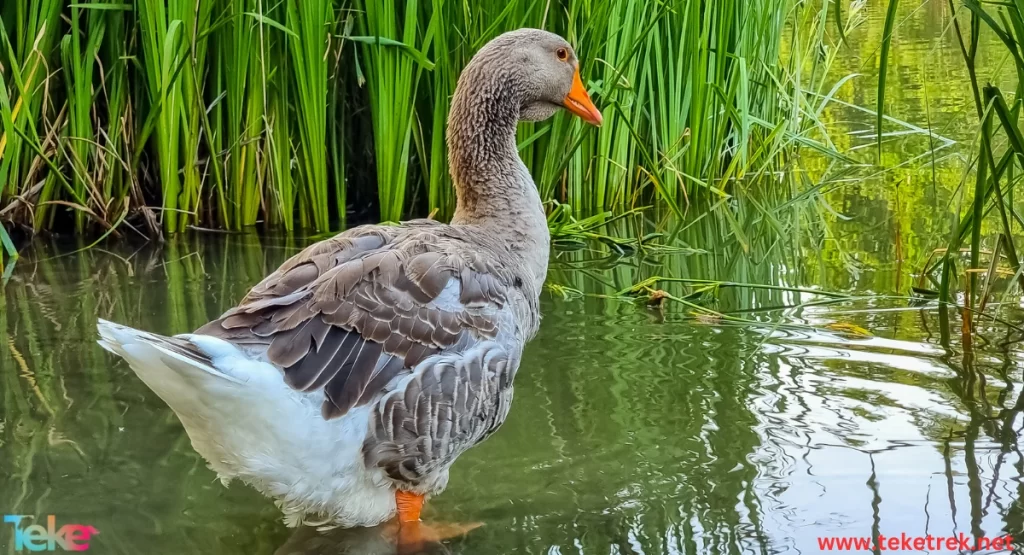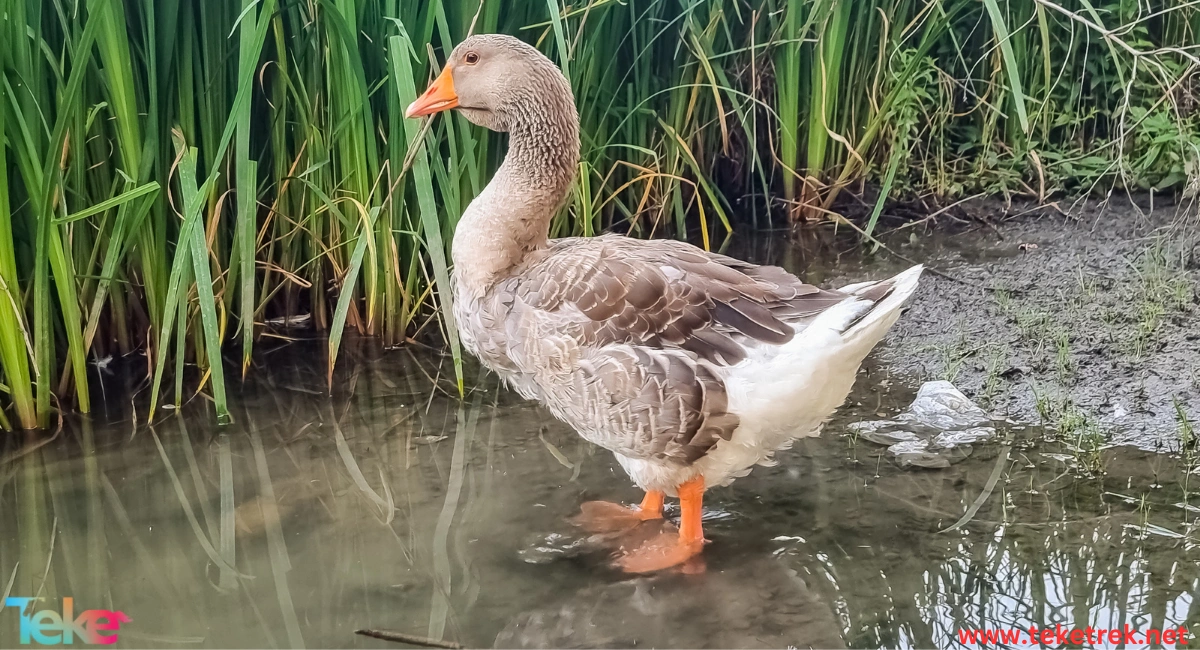is a medium-sized water bird belonging to the family Rallidae, order Gruiformes, class Aves, and phylum Chordata. Its scientific name is Gallinula.
Let’s learn more about it from teketrek.

The Moorhen specifications:
Color: The Moorhen shines with rainbow-like colors.
Walk: It struts near marshes, lifting and lowering its neck with each step.
It has the ability to dive and walk underwater to hide from view and quickly smooth its feathers upon resurfacing.
Appearance: The Moorhen is black with a red beak and a yellow tip. The red color extends to the front of its forehead.
Length, weight: It measures 25 to 38 cm in length, with a wingspan of 50 cm and a weight ranging from 250-400 grams.
Wings, belly: Its wings are dark brown, and its belly is bluish black with white lines on the wings.
Where do Moorhens live
Moorhens inhabit freshwater marshes, lakes, canals, and ponds containing aquatic plants and other vegetation.
What do Moorhens eat
Moorhens have a varied diet consisting of invertebrates like insects and aquatic spiders, small animals like mice and lizards, as well as some plants and fruits. They also dive to gather aquatic plant seeds and roots.
Where are Moorhens found
Moorhens are found in western United States, California, Mexico, Nevada, and Arizona. They are also present along the Gulf Coast and the eastern coast from Virginia to Florida.
Reproductive stages of Moorhens:
Male Moorhens court females by bringing aquatic herbs and wagging their tails.
Males build nests from branches and grasses, forming monogamous pairs with females.
Nests are made from branches, lined with leaves.
Females lay four to twelve eggs at a rate of one per day.
The eggs hatch after 17 to 22 days, and the chicks leave the nests while both parents care for them.
species of Moorhens
· the Dusky Moorhen
it is characterized by a dark gray color that tends to black, and it lives in the region extending from Indonesia to Australia
·the Common Moorhen:
it is distinguished by its long legs, green hay, and its great ability to fly long distances
· Other species include the Pacific Moorhen, Tristian Moorhen, Gough Moorhen, and Sultan’s Moorhen
Facts about The Moorhen:
The Moorhen has chicken-like feet that are green in color.
Males are larger than females, possessing a shield extending from the beak between the eyes to the forehead.
When swimming, the Moorhen performs vigorous movements, bending its body forward. When sensing danger, it swims above the water.
Moorhens are social birds, often found among other waterfowl either singly or in groups.
They have a distinct loud call so Moorhens could be heard more often than seen.
Moorhens cannot fly long distances; they are often seen running on the water.
They are unable to swim quickly due to their non-webbed feet and have a clear dislike for ducks and geese.
When sensing enemies approaching, Moorhens sit at the bottom of the water, protruding their beaks above the surface.
Moorhens usually build their nests among tree roots in marshy areas or even on debris.

FAQs about Moorhen:
What is the lifespan of a Moorhen-
The lifespan of a Moorhen is short, not exceeding 3 years, but there are rare cases where they have lived up to 10 years.
?How do Moorhens communicate with others of their kind-
Moorhens have a distinctive call similar to clucking that they use to communicate with each other
?What are some common predators of Moorhens-
Moorhens face predation from various animals in their environment such as foxes, dogs, wolves, large reptiles, and wild cats
?What are the names given to water chickens-
It has many names, including Water chicken, Glue bird, Coot, Moorhen, Green foot chicken.
?What is the name of baby moorhen-
They are known as moorhen chicks
In conclusion: The Moorhen has been discovered in aquatic areas around the world, adding a unique beauty to water environments. It is distinguished by its colorful feathers and red beak and is considered an essential part of the wildlife diversity in those areas. However, it faces environmental challenges such as habitat loss and degradation due to climate change and water pollution. Therefore, efforts must be made to protect its habitats and maintain the balance of the ecosystem to ensure the continuity of its presence and beauty in nature.
References:





